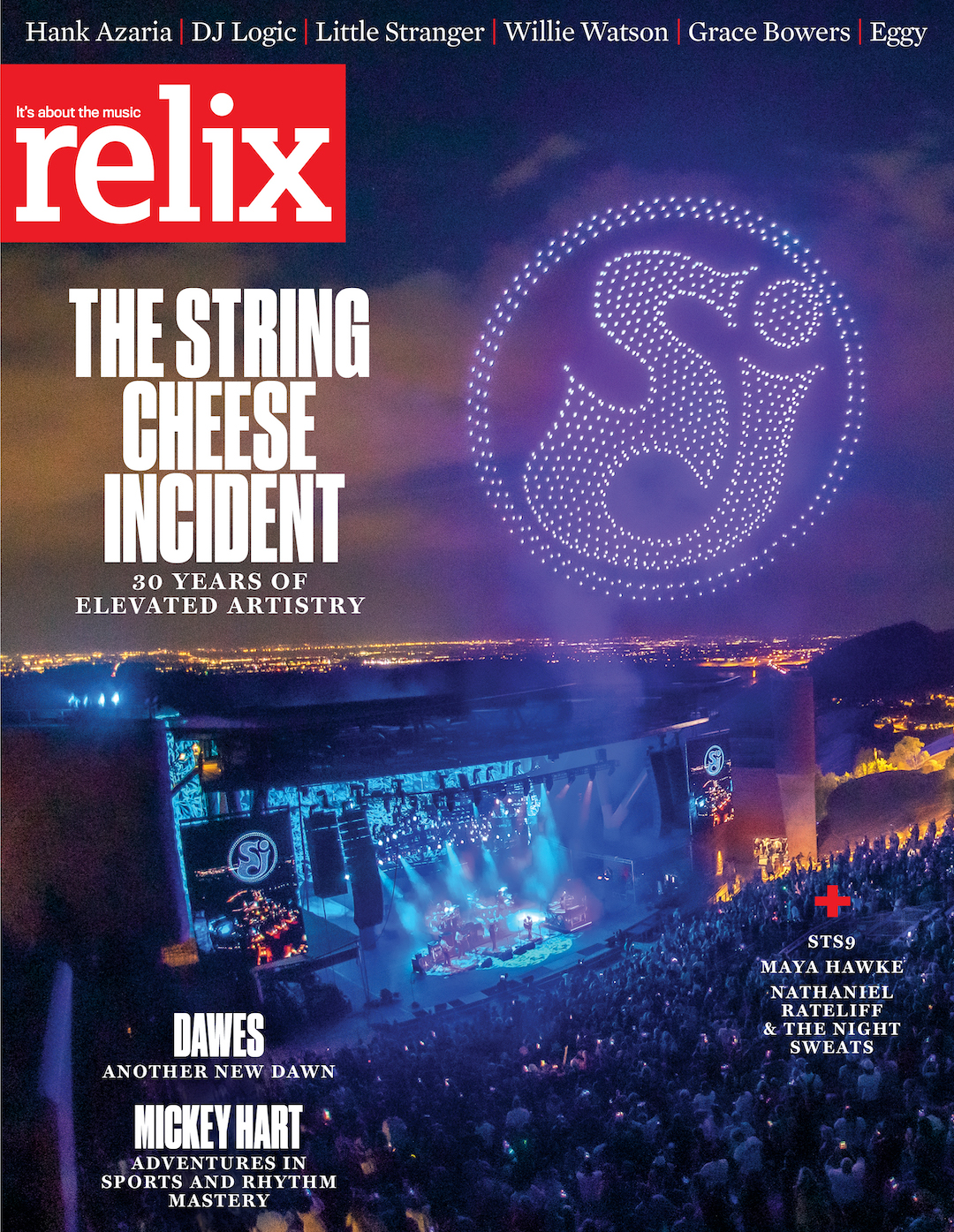Still Havin’ a Party: The Stone Pony Turns 40
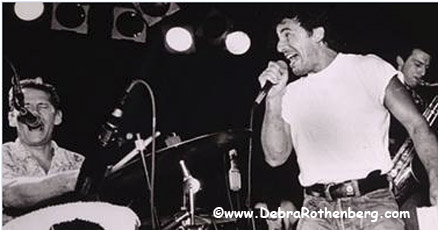
Photo by Debra Rothenberg
New Jersey has been in the spotlight lately: the cultural flashpoints that are The Real Housewives of New Jersey and MTV’s Jersey Shore, the devastation of Superstorm Sandy and fall-out from the botched recovery, the sudden passing of the beloved James Gandolfini, the Great Seaside Boardwalk Fire, the bully ways of our governor and his confounded bridge and oh yeah, the friggin’ Super Bowl.
But hey, oh, we don’t give a flying you know what.We LIKE the attention; we take to the limelight like Silvio Dante to Sunday gravy. But honestly, we’re never ones to turn down a dance under the red hot party lights.
So this month, there’s finally a good reason to celebrate down the frozen Shore, because the world famous Stone Pony is 40.
It is one of the last of a dying breed: the long-standing rock n’ roll club. Like The Troubadour, The Belly Up and Tipitina’s, all are houses of music worship that still stand in an ever-changing world of entertainment choices.
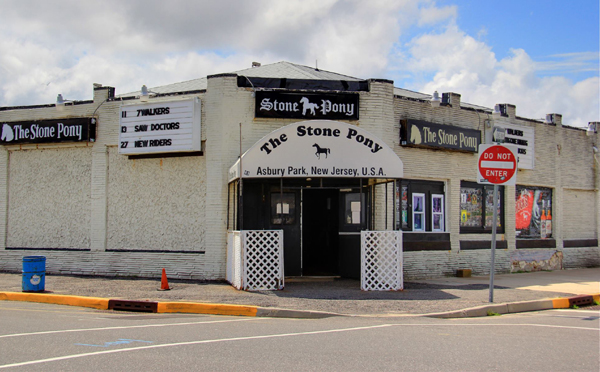
When you live around the corner from one of the most famous rock n’ roll clubs in the world, like I do to the Stone Pony , you’ve got to know it’s history, as well as you know the door man and bartender. Like great tales of yesteryear (and believe me, people around here know how to spin a good story) the legend of The Stone Pony reads like a tragedy and a comedy, a time worn tale of ultimate redemption.
It was doomed since the beginning.On opening night it snowed seven inches; the heat broke as the winds howled off the ocean across the street into the club. Legend has it that the bar rang a total of one dollar for the evening. They played disco music. Less than a year in, they had to do a fundraiser to keep the doors open.
Since then, The Stone Pony has always seemed to be either on the edge of closing, bankruptcy, selling, moving, expanding, but most of all, just being there.
“The Pony” (as locals call it) is a place where generations of fun seekers and music lovers have experienced an “epic night.” With that kind of notoriety and decades of world class partying runs inherent risk of the fairy tale outweighing the facts.
For example, Bruce Springsteen did not get his start at The Stone Pony. Nope. He honed his craft for years all over the Jersey Shore and up and down the Eastern Seaboard before the Ocean Ave. club opened on February 8, 1974, a year and a month after his debut, Greetings From Asbury Park, NJ was released and five months after he dropped his follow-up, The Wild Innocent and The E Street Shuffle.
However, The Stone Pony was the venue where the future of Springsteen and The E Street Band, a group comprised made of local musicians, would soon unfold, as it quickly became the gathering space for the only-in-Jersey characters who made up the burgeoning early 70’s original rock n’ roll scene in Asbury Park.
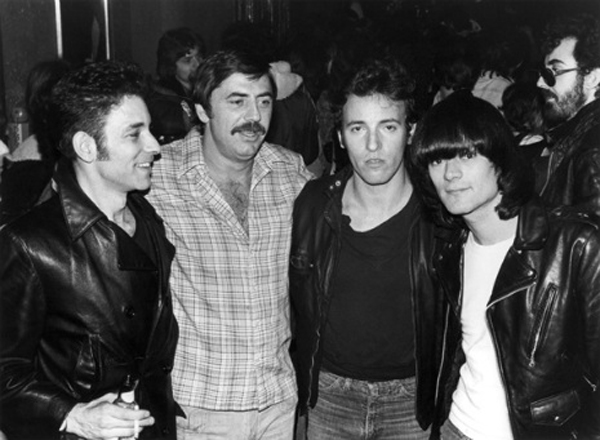
With the formation of one of the first Stone Pony house bands, The Blackberry Blues Band, which featured local guitarist “Miami Steve” Van Zandt and soul singer, “Southside Johnny” Lyon, the club gained traction and the talented collective packed the joint three nights a week.
September 9 , 1974 began the history of unannounced sets at The Pony by Bruce Springsteen, who joined his pals in The Blackberry Blues Band for a late night jam that turned into an almost weekly occurrence in the winter of ‘74-’75, when Springsteen was a stage and barroom regular waiting to unleash Born to Run on the world.
The Blackberry Booze Band soon morphed into Southside Johnny and The Asbury Jukes, where Springsteen and Van Zandt consummated their working relationship, writing songs and arrangements for both The Jukes and The E Street Band.
The drinking age was 18, bars were on every corner, the boardwalk was alive; the hot rod cruising circuit was in full effect, budding teenage Lotharios filled the arcades and The Stone Pony was packed with sweaty, sunburned and slightly inebriated throngs.
Just years after devastating race riots burned in Asbury Park, The Pony was jumping with mixed-race bands made up of Jersey Shore locals, playing soul infused, and horn-section powered early rock influenced music, aka “The Jersey Shore Sound.”
The success of Born to Run in 1975 brought the Asbury Park scene major industry attention as Southside Johnny and The Asbury Jukes signed a major label deal to Epic Records and released their debut, I Don’t Want to Go Home in 1976.
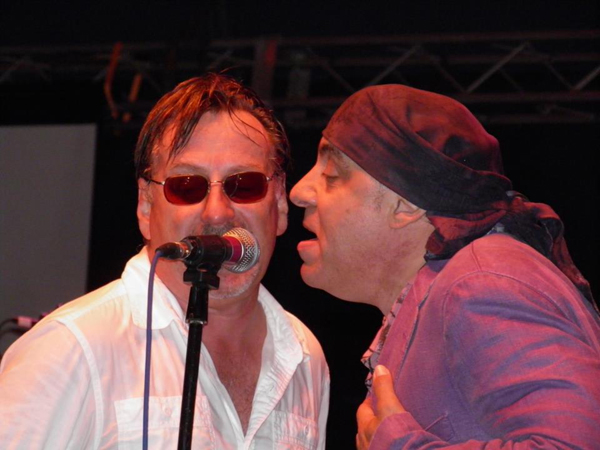
A live radio broadcast on the King Biscuit Flour Hour of Southside’s Memorial Day show at The Pony featuring Springsteen, Ronnie Spector and Lee Dorsey brought the raucous Jersey Shore club to a national audience who had them singing along to “We’re Havin’ a Party.”
People of a certain age who grew up around here say the Sixties ended sometime around the arrival of disco and the Bi-Centennial. The Pony kept pace and it wasn’t long before NYC bands like The Ramones and female fronted acts led by Jersey native Debbie Harry, as well as Patti Smith, travelled down the Garden State Parkway to bring their new sound called punk to the Jersey beaches.
The Pony rode the new wave as well as the Jersey Shore Sound (which still packs them in) with the snarky Brit Invasion of the late 70’s with Elvis Costello and The Attractions and Graham Parker. Acts based in NYC like Joan Jett and The Blackhearts, The Stray Cats and the bombast of Meatloaf all broke at the Stone Pony before going national.
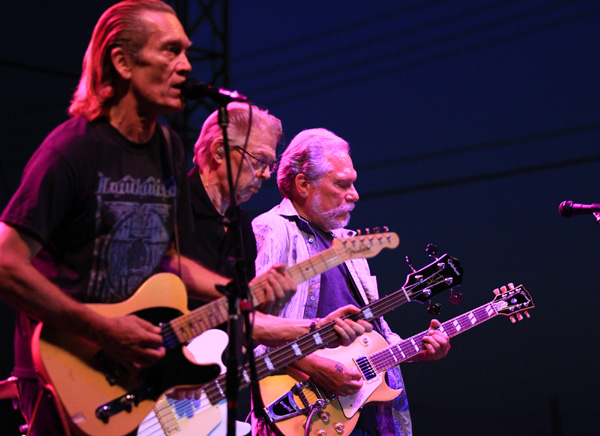
photo by Mike Black
The Stone Pony became a place where showmanship and great musicianship were expected and if the expectations were met, the love given back became career-lasting. The Pony took them in and these non-Jersey artists became part of the fabric of the building and culture.
Jamband pre-cursors acts like New Riders of the Purple Sage, Hot Tuna, and band leaders Levon Helm, Gregg Allman, David Bromberg, Dickey Betts and Johnny Winter became Stone Pony favorites.Singers like Warren Zevon, Garland Jefferies, Willie Nile, David Johansen and Gary US Bonds were adopted sons one in all. Rockabilly great Robert Gordon and punk soul legend Willy “Mink” Deville were bad-asses and the Asbury crowd loved them for it.
While Springsteen and The E Street Band and Southside Johnny and The Asbury Jukes were out on a quest for global domination in the 1980’s, Asbury Park began to crumble. But The Pony was rocking with a calendar packed with acts like Stevie Ray Vaughan and Double Trouble and local bands vying to become the next “house band” that Bruce or any member of the E Street Band jammed with when they were off the road.
The corner of Ocean and Second Ave became the center of the universe on June 8, 1984 when Bruce Springsteen and The E Street Band played a warm-up show for the Born in the USA tour. The odyssey that cemented Springsteen as one of the most successful entertainers in history, began at The Stone Pony.
The generation that built the place may have grown up, but there was another waiting in the wings, and these musicians earned the Springsteen stamp of approva: Jersey players with major chops like Bobby Bandiera and his band Cats on a Smooth Surface, John Eddie and the metal of Skid Row.
By the late 80’s, however, Asbury Park was in ruins. The once vibrant Jersey Shore was on life support as the club slid into bankruptcy.
The Stone Pony re-emerged again in 1992 at the time when alternative rock and jamband scenes were sprouting all over America. It came back to life, this time with Generation X making their memories.
Jersey alternative bands such The Smithereens, Dramarama and adopted son Matthew Sweet took their Pony-honed skills to great lengths nationwide. Jambands like Jersey’s own Blues Traveler, Spin Doctors, New Potato Caboose, Gov’t Mule, moe., Dweezil Zappa and Widespread Panic packed the Deadhead friendly club.
It was the perfect place for Blind Melon to kick off their tours and to warm up for the seminal Woodstock ’94 gig. Lenny Kravitz used The Stone Pony as the jumping point for his career debut, Let Love Rule with Springsteen looking on from the back bar.
It was a tough go in Asbury Park during that time but the crowd was just as tough, especially on March3, 1995 when Oasis came to town. There are certain things you don’t do in Jersey – one would be insult the host on the very stage that Bruce and his boys built. That’s exactly what the Brothers Gallagher did. They called the Jersey Shore crowd “wankers” the second song into the set. The act of disrespect pissed off the crowd (including this writer). The response was quick and distinctly Jersey: throw beer at Oasis for the rest of the 45 minute set and by give them the double Jersey salute (the giving of the finger with both hands). By the time a drenched and drunk Oasis finished with a “Thank You and Fuck You,” the audience chased them to their bus, where The Gallaghers cursed and spit out of the cracks of their touring vehicle window until a police escort came to save them.
Despite however sporadic “epic” nights (Green Day, Deftones) inside The Pony, what was going on outside of the club got as bad as it possibly could. By 1998 most of the neighborhood around the venue, including the once vibrant boardwalk was in utter shambles.The Stone Pony closed.
On the boarded up building next door, someone optimistically painted in huge letters, “This Too Shall Pass,” and it did.
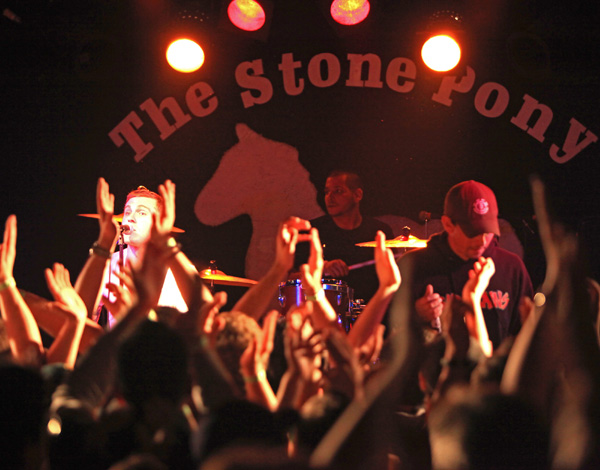
photo by Mike Black
The Stony Pony re-opened with pomp and circumstance in 2000 with a focus on hardcore and emo bands.Kids were being dropped off by their parents, who didn’t have to be told that The Pony was a safe haven in the middle of chaos.
In 2005, the building and surrounding property were sold to a developer with a vision, Madison Marquette, who also owned the boardwalk, making the Stone Pony the crown jewel of the re-development plan.
By 2007, following the lead of the LGBT community, artists, musicians, surfers, skaters began to inhabit and re-invigorate the City by the Sea—you could feel something was happening. By 2009, locals realized it wasn’t another false start. The old guard came in droves to see Southside Johnny, Gen X-ers dropped off their kids for School of Rock matinees and the boardwalk started to come alive with great restaurants.

Springsteen returned to hang and hold court, interested and supportive of the “new” Asbury Park. He jumped on stage with Asbury’s favorite Californian Mike Ness. He came in to drink and play onstage with friends like Sean Penn in tow. He played school fundraisers. Steve Van Zandt has come back to perform with The Asbury Jukes.
The original cast of characters, people like “Mad Dog” Vini Lopez and “Tinker” West, mingle with the new tattooed crew, a true multi-generational renaissance revolving around good music and better times.
By 2011, other changes brought a new sense of community, which took hold in part due to local bands with international credibility: The Bouncing Souls, The Gaslight Anthem, Black Label Society, Nicole Atkins. Local musicians of all stripes gathered in mass at the outdoor summer shows that featured acts like The Black Crowes, The Pretenders, Dropkick Murphy’s and Social Distortion.
Then came Sandy.
The ocean across the street pushed the beach, literally, to the front door of the club. CNN was there as rock fans the world over sent prayers that were miraculously answered. The Pony came away virtually unscathed and considering what transpired to the north and south of the club, it was truly an act of unbelievable luck. As it always has been, The Pony was the central hub for charity, but this time, it was for Hurricane Sandy relief shows for the Jersey Shore.
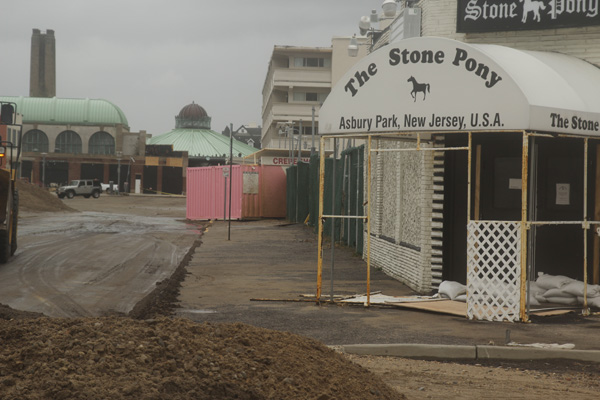
Until last year, to the best of my recollection, I do not believe the President of the United States has ever named checked a rock n’ roll club in a speech. President Barack Obama did so on the Asbury Park Boardwalk the day after Memorial Day, when he remarked on the successful re-opening of businesses along the Jersey Shore and Gaslight Anthem’s two night stand, “People were hanging out on balconies and beaches and shows were sold out at The Stone Pony.”
Sure it’s a dumpy building, but the sound is amazing. It’s not main street suburbia, its Asbury Park, an iconic place where mojo oozes out of the walls. It’s a neighborhood joint, a bar that is indeed a “public house,” a spot to assist the community through the power of rock n’ roll, a sacred place in an age when nothing is. It’s got the worst bathroom set-up in North America, but we don’t care. It’s ours.
Reason enough to celebrate not just on a birthday, but every day.
So raise your glass and toast to the impossible! Because the impossible has already happened, The Stone Pony is 40 years old and long may she run.
***
Tim Donnelly is a contributing editor at Relix. Over the years he has written cover stories on Pearl Jam, Trey Anastasio and Bonnaroo.
Debra Rothenberg took the Levon Helm-Bruce Springsteen image. It appears in her book Bruce Springsteen: In Focus-Photographs 1980-2012.



